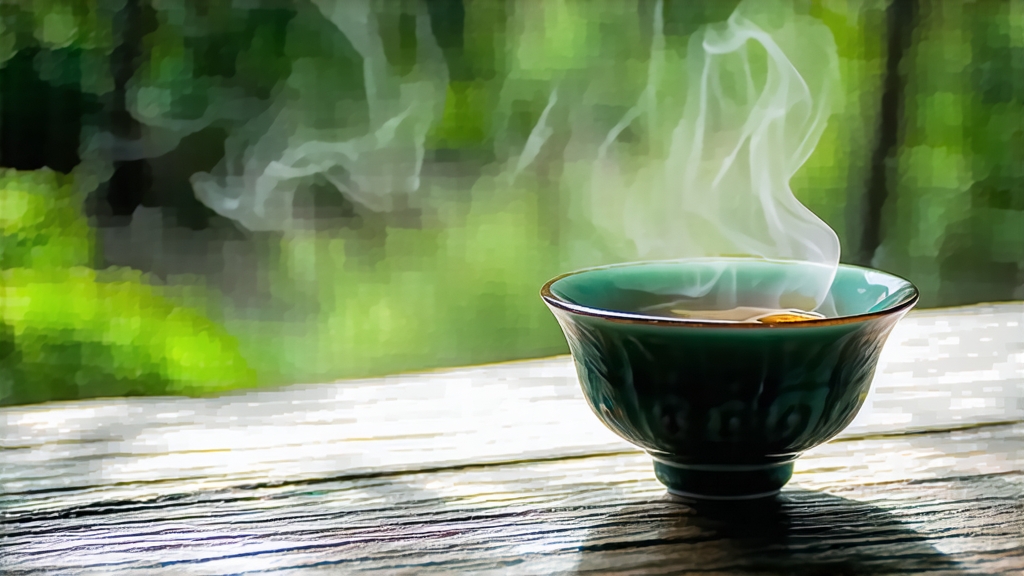
Alishan High-Mountain Oolong is not merely a tea; it is a liquid map of Taiwan’s central mountain range, a cultural artifact shaped by monsoon, mist, and human devotion. Rising between 1,000 and 1,400 metres above sea level, the Alishan range catches the tail of the north-east monsoon that drags across the Pacific. The result is a perennial cloak of fog that filters sunlight into a soft, silver diffusion, forcing the tea bushes to grow slowly, thickening their cell walls and concentrating their aromatic oils. In the cup, this translates into a bouquet that hovers between white orchid and whipped cream, with a finish that lingers like cool pine air after rain.
Historical roots
Oolong itself was born in Fujian during the Ming dynasty, but Alishan’s story begins in 1855, when Lin Feng-chi, a scholar-official returning from Fujian, smuggled 36 Qingxin (Green Heart) cuttings in the hollowed shaft of a calligraphy brush. The seedlings thrived in the virgin forests of Chiayi County, and by the 1920s Japanese agronomists had established experimental stations, selecting high-altitude gardens to supply the imperial palate. After 1949, Kuomintang veterans refined the semi-oxidised craft, marrying Fujian technique with Japanese horticultural discipline. Today, Alishan is both a registered geographical indication and a poetic shorthand for Taiwan’s pursuit of alpine purity.
Cultivar and terroir
The dominant cultivar remains Qingxin Oolong, a shy, slow-yielding bush that demands morning sun and afternoon fog. Its small, leathery leaves are ideally suited to the short growing season: two flushes in spring (March–April) and winter (October–November), each lasting barely three weeks. Night temperatures can drop to 8 °C, prompting the plant to convert starches into soluble sugars and poly-phenols, the precursors of oolong’s signature milky sweetness. Soils are lateritic, rich in iron and magnesium, and drained by ancient cypress roots that share the slopes with bamboo and indigenous orchids. The combined effect is a cup that tastes of mountain minerality wrapped in floral silk.
Plucking etiquette
Only the apical two leaves and a bud are taken, when the dew has lifted but before the sun turns the leaf edges brittle. Experienced pickers use a twisting motion rather than a snap, preserving the fine hairs that hold essential oils. A full day’s harvest for one artisan is barely eight kilograms of fresh leaf, which will shrink to less than 1.5 kg of finished tea. The pluck is carried down the mountain in wicker baskets lined with banana leaf to prevent bruising, a practice unchanged since the Qing era.
Crafting the leaf: an eight-act choreography
- Solar withering: trays of leaf are laid under filtered sunlight for 20 minutes, initiating enzymatic activity.
- Indoor withering: the leaf is gently fluffed every half hour for six hours, allowing moisture to migrate outward while the edges redden.
- Bruising: bamboo drums tumble the leaf for three minutes, rupturing cells just enough to invite oxygen without shredding.
- Oxidation: the leaf rests on screens in a climate-controlled room (22 °C, 75 % RH) for four hours, turning from jade to burgundy at the rim while the centre stays emerald.
- Pan-fixation: a 280 °C wok arrests oxidation at 25 %, locking in a green heart.
- Rolling: the warm leaf is wrapped in cotton cloth and kneaded into tight hemispheres, encouraging the release of sap that will later glisten as white frost on the dried leaf.
- Light charcoal baking: over three consecutive nights, the leaf is cradled in bamboo trays above glowing longan wood embers at 70 °C, each session lasting two hours. The bake is less aggressive than the Dongding style, preserving high-notes of lilac while adding a whisper of caramel.
- Rest and refinement: the tea is allowed to “breathe” in reed-lined earthen jars for 30 days, letting residual moisture equalise and flavours marry.
The finished leaf
Look for jade-green pellets the colour of pre-dawn moss, each one ringed by a ferric halo. When rubbed between fingers, they emit a scent of sweet corn and alpine pine. Upon brewing, the pellets unfurl into complete leaves serrated like miniature bayonets, the veins still